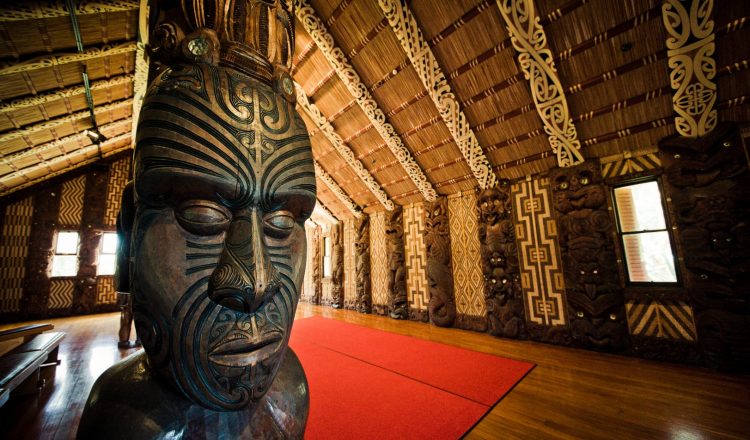マオリ王の活動
ニュージーランドの海岸に最初に到着したのは、マオリ族の祖先で、西暦1200年から1300年の間だったと言われています。ポリネシアから風、星、海流を利用して航海してきた熟練の船乗りたちは、その影響を島中に広めていきました。マオリの人々は、自分たちをイウィ(iwi)と呼ばれるグループに分けました。イウィは国家や民族、部族と訳されますが、これらのイウィは通常非常に大きく、その中にはHapuと呼ばれる多くの準部族が存在していました。hapuは、マオリの社会構造における主要な単位であり、通常500人程度が所属し、多くの大家族で構成されています。各hapuはイウィ内の他のhapuとは独立しており、通常は家族の間で集落を分割しています。
最近の国勢調査によると、ニュージーランドで最も大きなイウィは以下の通りです。
- Ngapuhi(125,601)
- Ngati Porou(71,049)
- Ngai Tahu(54,819)
- Waikato(40,083)
マオリの王様たち
マオリ族の社会階層の頂点に立つのは(酋)長です。各部族には、民衆の悩みに耳を傾け、苦難の時には民衆を結集する長がいました。土地を開拓したにもかかわらず、部族は土地の所有権という概念を持っていませんでした。土地は征服によってのみ手に入れることができ、その土地を積極的に使用している場合にのみ、本当の意味でイウィのものとなりました。これが大きな問題となったのは、ヨーロッパから多くの入植者がやってきて、彼らの土地を買って町やコミュニティを作ろうとしたからです。
ヨーロッパの土地買収に対するマオリの反応は様々で、領土を売るイウィもいれば、侵入に反対するイウィもいました。イギリスがニュージーランドを併合し、軍事介入の恐れが出てきたため、マオリの酋長たちは自分たちの故郷を守るために行動を起こすことになりました。マオリの酋長たちは、ヨーロッパ人の進出にイウイを分割して対抗することはできないと考え、代わりに対抗するための強みとなるもの、つまり強力な王政に目を向けたのです。
1858年、マオリ族はワイカト部族(Waikato iwi)の酋長であるPotatua Te Wherowheroを自分たちの王として選びました。しかし、彼は治世の早い段階で亡くなり、息子のTawhiaoがその地位と英国との戦いを引き継ぎました。マオリ族の統一に不満と懸念を抱いた英国政府は、1863年にワイカトの土地に侵入し、さらに多くの土地を英国に明け渡すことになるワイカト戦争を始めました。
その後100年以上にわたり、マオリの王はロンドンや英国王室と密接な関係を保ちながら、政治的闘争の場で失った土地を取り戻そうとします。1975年にマオリ族初の女王、テ・アタイランギカアフ(Te Atairangikaahu)女王が政府と和解し、今日のようなマオリ文化への進歩的なアプローチへの大きな一歩を踏み出すまで、彼らは成功を収めることができませんでした。彼女は、2006年に息子のツヘイティア(Tuheitia)が後を継ぐまでの40年間、最も長くマオリの人々を率いてきた君主です。マオリの王は、統一されたマオリの文化的な象徴であり、重要な儀式の役割を担っています。

















































